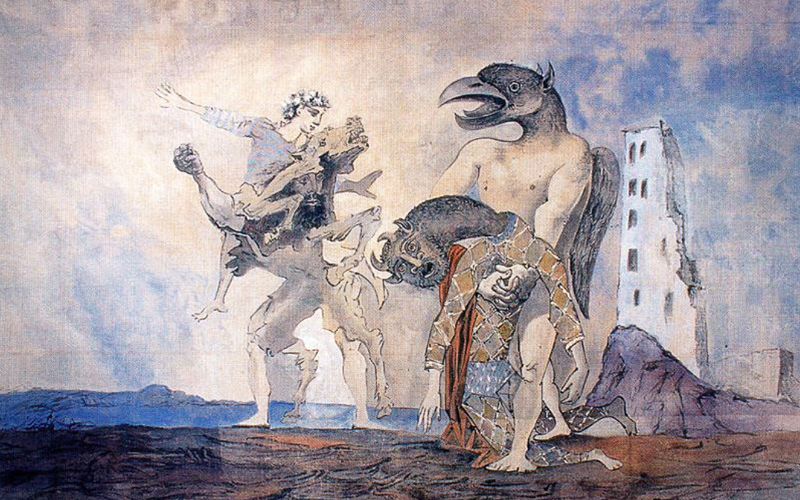This painting was created in 1936 to serve as the stage curtain for Romain Rolland’s play Le 14 Juillet.
The work, which stands about 9 metres tall and more than 12 metres across, bears little resemblance to the play and was apparently rushed finished as an enlargement from a small gouache – an opaque watercolour – that had been completed long before the commission.
The subject is an odd choice because there is no iconographic or narrative connection to Romain Rolland’s animated play. However, there is evidence that the artist attempted a Revolutionary design but did not have the time to complete it.
A curious drawing dated June 13, 1936 depicts a joyful crowd with what appears to be a symbolic reference to the capture of the Bastille. Picasso, on the other hand, was obsessed at the time with personal allusions to mythology and bullfighting.
The curtain depicts the clash of good and evil, the triumph of youth, and beauty triumphing over menace, a logical reinterpretation of Picasso and Rolland’s epic themes.
Picasso was so devoted to the piece that he kept it in his Paris studio throughout the war, giving it only in 1965 to Toulouse, a southern city with a long history of bullfighting. The curtain is currently displayed in its own gallery at Toulouse, France’s Espace d’Art Moderne et Contemporain.


